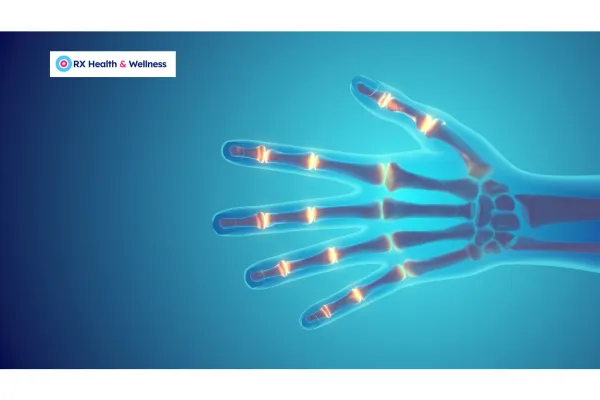
Chronic Diseases and Women
Chronic Diseases and Women: A Special Focus
When discussing chronic diseases, it is crucial to acknowledge their unique impact on women. Women often experience chronic diseases differently than men, both in terms of symptoms and the challenges faced in diagnosis and treatment. This disparity is rooted in biological, social, and healthcare-related factors.
Biological Differences and Disease Risk
Biologically, women are predisposed to certain chronic diseases due to hormonal fluctuations, reproductive health, and genetic factors. For example, autoimmune diseases such as lupus and multiple sclerosis are significantly more prevalent in women than men (Ngo et al., 2014). Hormonal changes across the lifespan—from menstruation and pregnancy to menopause—can influence disease onset, severity, and progression.
Women also experience differences in metabolic, cardiovascular, and musculoskeletal health due to estrogen, progesterone, and other hormonal influences (Mendelsohn & Karas, 2005).
Autoimmune Diseases and Women
Women are disproportionately affected by autoimmune diseases, with an estimated 78% of autoimmune cases occurring in females (Whitacre, 2001). Genetic predispositions, hormonal influences, and environmental triggers contribute to this disparity. Common autoimmune conditions in women include:
Emerging research highlights the role of gut dysbiosis, chronic inflammation, and molecular mimicry in autoimmune pathogenesis (Zhang et al., 2022). Early detection and tailored care, including diet, stress reduction, and integrative therapies, can improve quality of life.
Heart Disease in Women
Heart disease is the leading cause of death among women globally, yet it is often underrecognized. Women’s symptoms of myocardial infarction can differ from men’s, including:
Fatigue
Nausea
Jaw or back pain
These atypical presentations can delay diagnosis and treatment (Shaw et al., 2009). Prevention and management strategies for women include heart-healthy diets, regular physical activity, stress management, and awareness of women-specific symptoms.
Diabetes in Women
Diabetes presents unique challenges in women:
Higher risk for cardiovascular complications and kidney disease than men (Kautzky-Willer et al., 2016)
Increased risk of gestational diabetes and pregnancy-related complications
Management strategies should be personalized, integrating nutrition, exercise, monitoring blood glucose, and consideration of reproductive health.
Other Chronic Diseases Affecting Women
Women face unique challenges across a range of chronic conditions:
Arthritis & Cancer: Physical therapy and integrative therapies can support conventional treatments.
Depression & Mental Health: Lifestyle interventions, therapy, medication, and social support are crucial.
Gastrointestinal Diseases: Gut health can be optimized with diet modifications, stress reduction, and probiotics.
High Blood Pressure & Cholesterol: Lifestyle interventions and education tailored to women’s physiology.
Kidney & Liver Disease: Nutritional management, hydration, and lifestyle adjustments.
Multiple Sclerosis (MS): Gender-specific therapies and support programs.
Obesity & Metabolic Disorders:Weight management strategies considering hormonal and metabolic factors.
Osteoporosis: Bone health supported with nutrition, exercise, and lifestyle changes (NIH Osteoporosis and Related Bone Diseases National Resource Center).
PCOS: Diet, exercise, and medical management tailored to individual metabolic profiles.
Aging and Menopause
Hormonal changes during aging impact chronic disease risk. Declines in estrogen and progesterone during menopause increase risks for:
Men also experience gradual testosterone decline affecting muscle mass, bone density, and cardiovascular health. Addressing these changes through lifestyle interventions, hormone therapy when appropriate, and preventive care is essential (Carr, 2003).
Mental Health and Chronic Disease
Chronic physical conditions can exacerbate mental health challenges, particularly depression and anxiety, which are more common in women (Albert, 2015). Integrated care addressing both physical and mental health is essential for effective treatment.
Social and Economic Factors
Women may face:
Limited healthcare access
Caregiving responsibilities
Economic disparities impacting health outcomes
Community and policy interventions that support access to healthcare, nutritious food, and safe exercise environments can help mitigate these challenges.
Quality of Life Considerations
Chronic diseases can impact women’s:
Daily functioning
Career goals
Family and social roles
Gender-sensitive approaches in healthcare can improve health outcomes and life quality.
A Call for Gender-Sensitive Approaches
Recognizing women’s unique health needs is crucial. Tailoring prevention, diagnosis, and treatment strategies to account for biological, social, and environmental factors can improve outcomes. Functional and traditional medicine approaches should integrate gender-specific considerations.
References
Albert, P.R. (2015). Why is depression more prevalent in women?Journal of Psychiatry & Neuroscience, 40(4), 219–221.
Carr, M.C. (2003). The emergence of the metabolic syndrome with menopause.Journal of Clinical Endocrinology & Metabolism, 88(6), 2404–2411.
Kautzky-Willer, A., Harreiter, J., & Pacini, G. (2016). Sex and gender differences in risk, pathophysiology and complications of type 2 diabetes mellitus.Endocrine Reviews, 37(3), 278–316.
Mendelsohn, M.E., & Karas, R.H. (2005). Molecular and cellular basis of cardiovascular gender differences.Science, 308(5728), 1583–1587.
Ngo, S.T., Steyn, F.J., & McCombe, P.A. (2014). Gender differences in autoimmune disease.Frontiers in Neuroendocrinology, 35(3), 347–369.
Shaw, L.J., et al. (2009). Women and ischemic heart disease.Journal of the American College of Cardiology, 54(18), 1561–1575.
Whitacre, C.C. (2001). Sex differences in autoimmune disease.Nature Immunology, 2, 777–780.
Zhang, Y., et al. (2022). Gut microbiome in autoimmune diseases.Frontiers in Immunology, 13, 808417.
NIH Osteoporosis and Related Bone Diseases National Resource Center.https://www.niams.nih.gov/health-topics/osteoporosis
